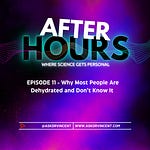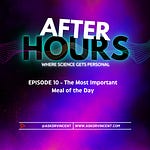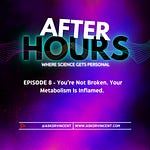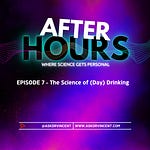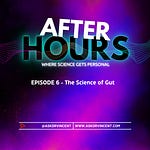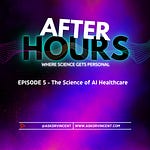Inflammation is one of those words people love to throw around without really knowing what it means. Most people picture a swollen ankle, a red rash or a puffy joint and think, “That’s inflammation.” Yes, that is one version of it, but it is only the surface. Inflammation is actually one of the most powerful communication systems in your body. It is how your cells send a distress signal and say, “Something is wrong, send help.” When that system is controlled and short term, it literally keeps you alive. When it is switched on all the time in the background, it slowly wears you down from the inside, long before you feel or see anything obvious.
At the cellular level, inflammation is really about stress and control. Your cells are under constant pressure from normal life, and one of the biggest drivers is oxidation. Every time you breathe, move, think, digest food or just exist, your body produces free radicals. These are unstable molecules that are missing an electron and are constantly trying to steal one to stabilise themselves. In small amounts, your body is very good at handling them. The problem starts when free radicals are being produced faster than your natural antioxidants can neutralise them. Your cells become unstable, your systems start to overcompensate and that unstable state is one of the main pathways into chronic inflammation.
Why does this matter so much? Because chronic, low grade inflammation sits behind many of the modern health issues I talk about every week. Only about 5 to 10 percent of cancers are truly hereditary. The majority begin as normal, healthy cells that are repeatedly inflamed, stressed and forced to mutate over time. The same concept applies to a lot of autoimmune conditions, joint pain, gut problems, skin issues, low energy and even poor sleep. Your gut lining, for example, is meant to inflame and repair quickly as part of normal digestion. When you are healthy, the repair matches the damage. When inflammation is out of control, that balance is lost. You start to notice bloating, food intolerances, reflux, constipation or loose stools, gassiness, discomfort after eating and changes in your microbiome that you cannot see but you definitely feel.

Your skin and joints tell their own inflammation story. Conditions like eczema and psoriasis are not simply “dry skin” problems, they are inflammatory and often autoimmune, where your immune system is literally attacking your own skin barrier. Acne begins with a bacterial infection, but inflamed skin is far more likely to break out and to heal with scarring. In the joints, inflammatory conditions such as rheumatoid arthritis are driven by the immune system attacking the joint structures. When I first gave my grandma early samples of activated phenolic antioxidants from my research, my only hope was to reduce her pain, because pain is caused by inflammation. What happened went far beyond that. By lowering her inflammation at the cellular level, we gave her cells the time and “space” to repair. Her cartilage recovered, her pain reduced and she went from being wheelchair bound to walking and dancing again in her 80s. That is the power of addressing the root cause, not just numbing the symptom.
The challenge is that we now live in a world that almost feels designed to inflame us. Ultra processed food, low fibre diets, constant sugar hits, disrupted sleep, chronic stress, sitting all day, pollution, smoking or vaping, poor hydration, microplastics and forever chemicals, they all add pressure to your cells. Even when you try to be “healthy” you are exposed, for example through takeaway coffee cups with plastic coatings and single use containers that exist for three minutes but leave a chemical footprint for much longer. I am not telling you this to make you paranoid, but to explain why so many people feel tired, puffy, moody or “off” even when their blood tests look normal. Your body is stuck in code red, diverting its resources to fighting stress and inflammation, while digestion, immunity, hormones, mood and sleep are quietly sacrificed.
The good news is that you have more control than you think. Start with your gut. Aim for at least 80 percent of your diet to come from whole, minimally processed foods that naturally help to reduce inflammation. This means fruit, especially apples, vegetables, healthy fats, nuts, legumes, whole grains and omega 3 rich foods. Be cautious with harsh “detox” greens, spirulina and tree bark powders that simply irritate your gut and send you to the toilet. That is not detox, that is inflammation and water loss. Respect your proteins by how you cook them, more steaming, baking and gentle roasting, less deep frying and constant charring that turns a good ingredient into an inflammatory one. Remember, what you put into your body is what your cells have to work with.
From there, protect your repair systems and your barriers. Prioritise your sleep as a non negotiable part of your health routine, not an afterthought. Sleep is when your body does its deepest repair work and resets your hormones and immune system. Move your body every day and aim for around ten thousand steps as a healthy goal rather than a punishment. Manage your stress in realistic, human ways: walking, sunlight, gardening, time in nature, deep breathing, real social connection. Finally, look after your skin barrier with the same respect you give your gut. Use gentle, supportive skincare that calms rather than strips, because broken barriers, whether on your skin or in your gut, are open invitations to inflammation. You do not need to be perfect. Follow my favourite rule: be good 80 percent of the time, live and let live 20 percent of the time. Health is not about perfection, it is about consistency. If you can make small, consistent changes to reduce inflammation, you give yourself the best chance at a longer, healthier and happier life.




